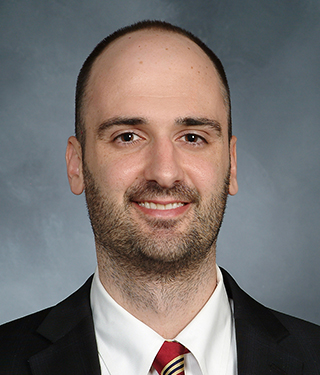Teen Vaping Declines, Addiction Rate Rises
A troubling percentage of teens who vape are heavy users, CDC data shows. An addiction specialist explains the latest figures and how COVID-19 may affect these trends.

Although the use of e-cigarettes has skyrocketed in recent years, the good news is the number of teens who vape in the United States decreased in the first part of 2020, data shows.
In a survey conducted January–March 2020, 19.6% of high school students and 4.7% of middle school students were current users of e-cigarettes, down from 27.5% and 10.5%, respectively, in 2019, according to the Centers for Disease Control and Prevention. Across these groups, the number of current users fell from 5.35 million to 3.57 million.
Unfortunately, a growing number of teens who vape said they vaped 20 days or more in the past 30 days of the survey. These heavy users now account for 39% of all high school users, up from 34% in 2019. So while overall numbers have gone down, a greater percentage of teens who vape appear to be addicted.
“I think there has been this countermovement even among kids themselves to make vaping less popular and to highlight that it’s not the cool, new, fun thing anymore,” says Dr. Jonathan Avery, director of addiction psychiatry at NewYork-Presbyterian/Weill Cornell Medical Center. “Its harms have been highlighted for both kids and parents who know about the catastrophic injuries connected to vaping,” he says, referring to vaping-related deaths and lung illnesses that occurred in 2019 and affected teens.
Despite the growing awareness, “once you’re addicted, regardless of the known risks, it’s hard to stop nicotine,” Dr. Avery says. “It’s a sneaky, difficult substance to quit.”
Dr. Avery notes that new federal restrictions on e-cigarettes took effect in early February, which may have contributed to the decline in overall teen usage. And in December 2019, the federal minimum age of purchasing tobacco, including e-cigarettes, was increased from 18 years old to 21. Dr. Avery continues to host, now virtually, public information sessions with advocacy groups like PAVE (Parents Against Vaping E-Cigarettes) to raise awareness about the harmful effects of vaping, and to reach out to pediatricians to help them learn how to screen for e-cigarette addiction.
Nicotine, especially in the developing brains of adolescents and young adults, is one of the hardest substances to quit over time, explains Dr. Avery. It activates the addiction pathways — certain circuits and centers of the brain that light up when people use substances and drive the brain to want to use more — making it very tough to stop. But these days, he says, unique social factors may also be at play, leading to an increase in addiction.
COVID-19 Impact on Teen Vaping Addiction
“It’s a challenging time to stay healthy, especially for those struggling with mental illness or substance use right now,” says Dr. Avery. “In addition to COVID, we have all the social unrest plus the stress around the political landscape. It presents all of the risk factors for developing mental illness and substance use issues: isolation, family stress, even increased parental substance use and mental health concerns. Parents and caregivers are stressed as well.”

Dr. Jonathan Avery
Dr. Avery does see a positive aspect in the current environment. The pandemic has created opportunities for families to be creative about ways to strengthen the parent-child bond and to connect with friends, or mental health providers if necessary.
“COVID-19 has increased telehealth and telepsychiatry options to meet people where they’re at,” he says. “And I think that’s been a positive for certain folks because I definitely have seen kids and patients who I don’t think would have come to my office, but the ability to do it from home is a little more enticing.”
Additionally, as parents spend substantially more time around their kids, Dr. Avery says parents have an opportunity to think more about their own relationship to substances like alcohol or pills and to model the behavior they would like to see in their children. In that way this crisis, while stressful for parents, gives them a chance to show kids how to handle challenges in ways other than relying on substances for escape, he says.
The recent CDC figures capture e-cigarette usage among teens before the pandemic began. Dr. Avery predicts the numbers will continue to trend downward because of public health messaging and less peer pressure to begin vaping. But he expressed concerns that teens might have greater access to other substances, most notably alcohol, of which there has been a large increase in sales and deliveries in the United States.
His advice for parents is to be careful with the alcohol or the pills they might have at home, and to address the mental health and health behaviors of their children. If a child is addicted for mental health reasons, seek out a mental health provider. If they are stuck due to physical dependence and withdrawal, speak to a pediatrician about nicotine replacement.
“In general, when one’s addicted to something, one needs to talk about it,” says Dr. Avery. “And so part of talking to mental health providers or pediatricians is also talking as a family and knowing that you have people who can rally around you and help.”
Additional Resources
To learn more about youth nicotine addiction and treatment options, or to speak to an addiction specialist, please visit Weill Cornell Medicine’s Youth Nicotine Program.
